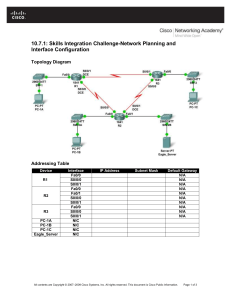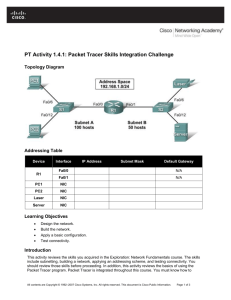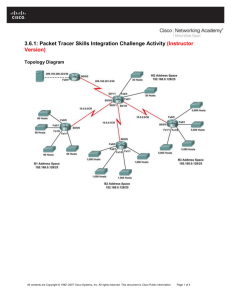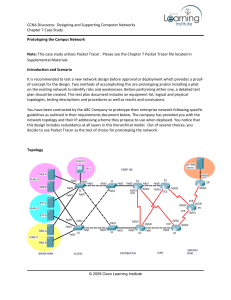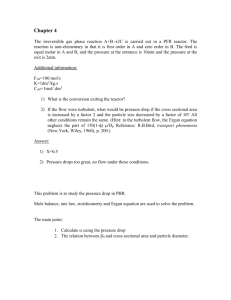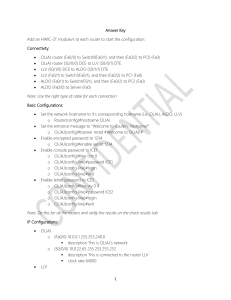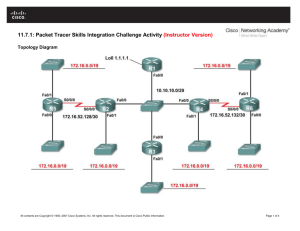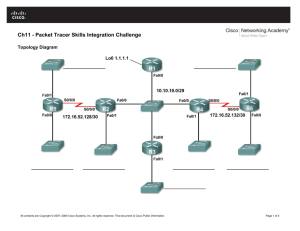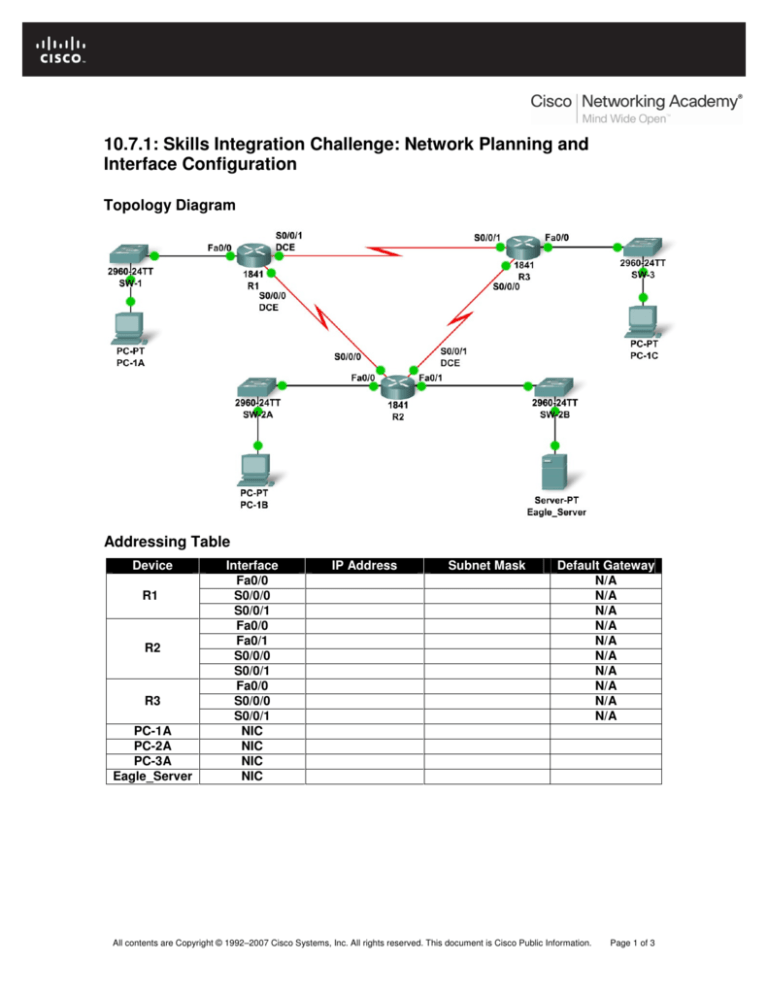
10.7.1: Skills Integration Challenge: Network Planning and
Interface Configuration
Topology Diagram
Addressing Table
Device
R1
R2
R3
PC-1A
PC-2A
PC-3A
Eagle_Server
Interface
Fa0/0
S0/0/0
S0/0/1
Fa0/0
Fa0/1
S0/0/0
S0/0/1
Fa0/0
S0/0/0
S0/0/1
NIC
NIC
NIC
NIC
IP Address
Subnet Mask
Default Gateway
N/A
N/A
N/A
N/A
N/A
N/A
N/A
N/A
N/A
N/A
All contents are Copyright © 1992–2007 Cisco Systems, Inc. All rights reserved. This document is Cisco Public Information.
Page 1 of 3
CCNA Exploration
Network Fundamentals:
Planning and Cabling Networks
10.7.1: Skills Integration Challenge: Network Planning and Interface Configuration
Learning Objectives
Upon completion of this lab, you will be able to:
•
Build the network topology.
•
Plan the IP addresses.
•
Configure router and PC interfaces.
•
Test the network.
Background
Practice your network building, planning, and configuration skills. Device names and routing have
already been configured.
Task 1: Build the Network Topology.
Use the following charts, and the devices in the Device Pool, to create the topology.
Routers:
Hostname
R1
R1
R1
R2
R2
R2
R3
Interface
Fa0/0
S0/0/0 (DCE)
S0/0/1 (DCE)
Fa0/0
S0/0/1 (DCE)
Fa0/1
Fa0/0
Connects To
SW-1
R2
R3
SW-2A
R3
SW-2B
SW-3
Interface
Fa0/1
S0/0/0
S0/0/1
Fa0/1
S0/0/0
Fa0/1
Fa0/1
Interface
Fa0/2
Fa0/2
Fa0/2
Fa0/2
Connects To
PC-1A
PC-1B
Eagle_Server
PC-1C
Interface
FastEthernet
FastEthernet
FastEthernet
FastEthernet
Switches:
Hostname
SW-1
SW-2A
SW-2B
SW-3
All contents are Copyright © 1992–2007 Cisco Systems, Inc. All rights reserved. This document is Cisco Public Information.
Page 2 of 3
CCNA Exploration
Network Fundamentals:
Planning and Cabling Networks
10.7.1: Skills Integration Challenge: Network Planning and Interface Configuration
Task 2: Create and Assign an Addressing Scheme.
You are asked to use the 192.168.1.0 /24 address space. Seven total networks are required;
assign the networks in decreasing order of number of hosts required for efficient use of address
space. Use the following charts to create an effective addressing scheme:
LAN:
Hostname
R1
R2
R3
Interface
Fa0/0
Fa0/0
Fa0/1
Fa0/0
Number of Hosts
60
10
30
7
WAN:
Hostname
R1-R2
R1-R3
R2-R3
Address to be Assigned
R1-First host address
R1-First host address
R2-First host address
Number of Hosts
2
2
2
Use the following rules to assign the IP addresses.
•
•
•
PCs will use the first host address in the subnet; the server will use the second to last
host address in its subnet.
All FastEthernet ports on a router will use the last host address of the assigned subnet.
The R1-R2 link will use the first WAN subnet, the R1-R3 link will use the second WAN
subnet, and the R2-R3 link will use the third WAN subnet. R1 and R2 DCE interfaces
should have clock rates of 56000.
Task 3: Interface Configuration
Perform interface configuration of the R1, R2, and R3 routers, the PCs, and the server according
to the addressing scheme above.
Task 4: Testing Connectivity
Make sure all PCs can ping their gateways, other PCs, and the server.
All contents are Copyright © 1992–2007 Cisco Systems, Inc. All rights reserved. This document is Cisco Public Information.
Page 3 of 3

